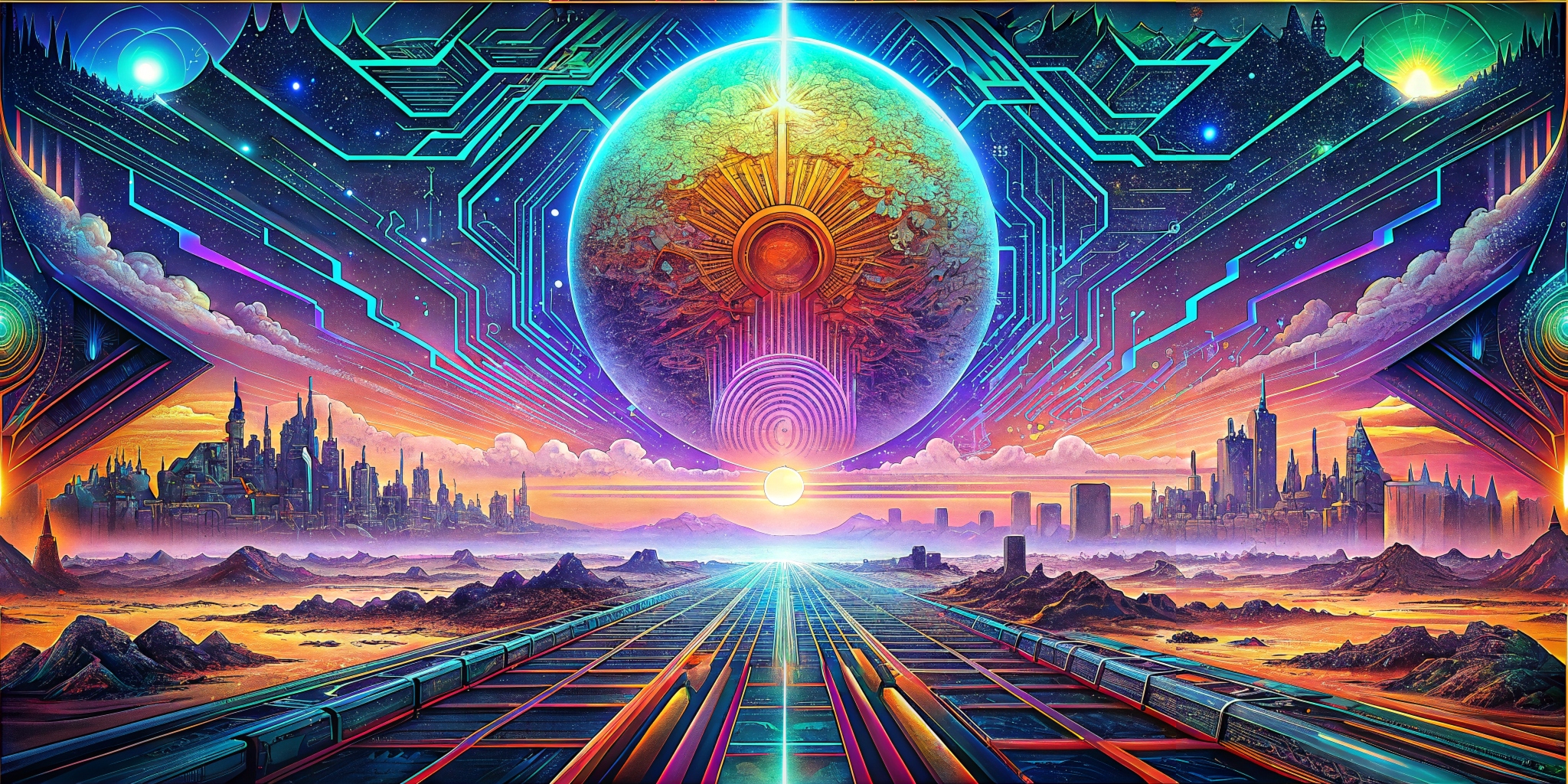I began my journey in the twilight of the 20th century. I’ve had a front-row seat to the relentless march of technological progress throughout the last 20-30 years. The story of artificial intelligence (AI) is particularly fascinating—a narrative that stretches from the rudimentary algorithms of the 1990s to the sophisticated generative AI systems of today. In this article, we’ll explore the evolution of AI, its current state, and the tantalizing possibilities that lie ahead.
The 1990s: Birth
The 1990s were a crucible of innovation, giving birth to technologies that would later serve as the bedrock for development. The World Wide Web went live, personal computers became household items, and Linux—an open-source operating system—was introduced. These advancements laid the groundwork for the data-driven, interconnected world that AI would thrive in.
The Early 2000s: Baby Steps
In the early 2000s, AI was akin to a toddler taking its first steps. Machine learning algorithms were basic, and data was a scarce commodity. However, the dot-com boom had left a digital goldmine of data, and the open-source movement was gaining traction. AI researchers began to harness these resources, training algorithms to recognize patterns and make predictions.
The 2010s: Adolescence
The 2010s marked AI’s coming of age. Big data, cloud computing, and advancements in machine learning algorithms led to AI systems that could outperform humans in specific tasks. Image recognition, natural language processing, and autonomous vehicles transitioned from science fiction to reality. AI was no longer just a tool; it became a collaborator in solving complex problems.
The Present: The Era of Generative AI
Today, we stand at the dawn of a new era with generative AI—a type of AI that can create original content, such as text, images, and even code, in response to prompts. This technology leverages deep learning models to analyze vast datasets and generate outputs that are statistically probable. Generative AI has given us tools like GPT (recently released GPT-4o has controversies of its own.) and DALL-E (latest version DALL-E 3), which can write essays or create artwork that feels distinctly human.
It’s transforming businesses by automating creative processes, enhancing personalization in marketing, and driving innovation. It’s enabling companies to generate new ideas, predict trends, and offer tailored solutions to customers, fostering growth and competitive advantage.
As we continue to navigate the digital age, generative AI stands as one of the most intriguing and rapidly evolving technologies. While it offers a plethora of opportunities for innovation and creativity, it’s not without its challenges. Let’s take a look at the complexities and potential of generative AI from the perspective of a web developer who’s been in the trenches since the dial-up days.
The Challenges of Generative AI
These tools, while groundbreaking, face several hurdles that developers, businesses, and society must address:
Ethical Considerations
The ethical implications are vast and complex. As these systems can generate realistic content, there’s a risk of misuse in creating deepfakes or spreading misinformation. Ensuring that it is used responsibly requires a concerted effort from developers, policymakers, and users alike.
Data Quality and Bias
The adage “garbage in, garbage out” holds true for generative AI. The quality of output is only as good as the data it’s trained on. If the data is biased or flawed, the AI’s creations will reflect that, perpetuating stereotypes or inaccuracies.
Intellectual Property Concerns
This all raises questions about the ownership of AI-generated content. As these systems can produce art, music, and writing, determining who holds the copyright—the creator of the AI, the user, or the AI itself—is a contentious issue.
Technical Challenges
The complexity of models generated this way means they require significant computational power and expertise to develop and maintain. This can lead to high costs and a talent gap, as there are not enough skilled professionals to meet the demand.
It’s a double-edged sword that offers immense potential for growth and innovation while presenting significant challenges that must be navigated with care. As we look to the future, it’s clear that generative AI will continue to shape our digital landscape. It’s up to us—developers, users, and society—to guide its development in a direction that maximizes its benefits and minimizes its risks. The journey of generative AI is just beginning, and its path will be one of the most fascinating to follow in the coming years.
The Future: AI’s Potential
The future of these tools are both exhilarating and uncertain. We’re on the brink of breakthroughs in quantum computing and neural interfaces that could exponentially increase AI’s capabilities. AI is expected to become more integrated into our daily lives, potentially reaching a point where it enhances human decision-making in real-time.
The next frontier for AI includes tackling more complex, abstract problems like climate change and global health. AI could become a collaborator in scientific research, offering insights derived from analyzing data on a scale no human could manage alone.
From the humble beginnings of the ’90s to the sophisticated generative AI of today, the journey has been nothing short of extraordinary. As a web developer who started when the internet was still young, I’ve seen AI grow from a theoretical concept to a transformative force across industries. The future of AI promises to be as impactful as its ascent, shaping our world in ways we are only beginning to imagine. As we continue to innovate, the symbiosis between human creativity and AI’s analytical power will redefine what’s possible, ushering in a new era of growth and discovery.
Below is a long and non-exhaustive list of resources about AI and its historic journey to today’s easy to access tools.
- sitn.hms.harvard.edu
- ourworldindata.org
- ibm.com
- hyscaler.com
- technologyreview.com
- forbes.com
- brookings.edu
- mckinsey.com
- psychologytoday.com
- journalofeconomicstructures.springeropen.com
- www2.deloitte.com
- mckinsey.com
- insnapsys.com
- disquantified.org
- usaii.org
- weforum.org
- hai.stanford.edu
- marsner.com
- spectrum.ieee.org
- bighuman.com
- theainavigator.com
- tableau.com
- news.mit.edu
- research.ibm.com
- en.wikipedia.org
- builtin.com
- research.aimultiple.com
- pg-p.ctme.caltech.edu
- history.com
- techtraininghq.com
- adventuregamers.com
- techrepublic.com
- twitter.com
- youtube.com
- linkedin.com


